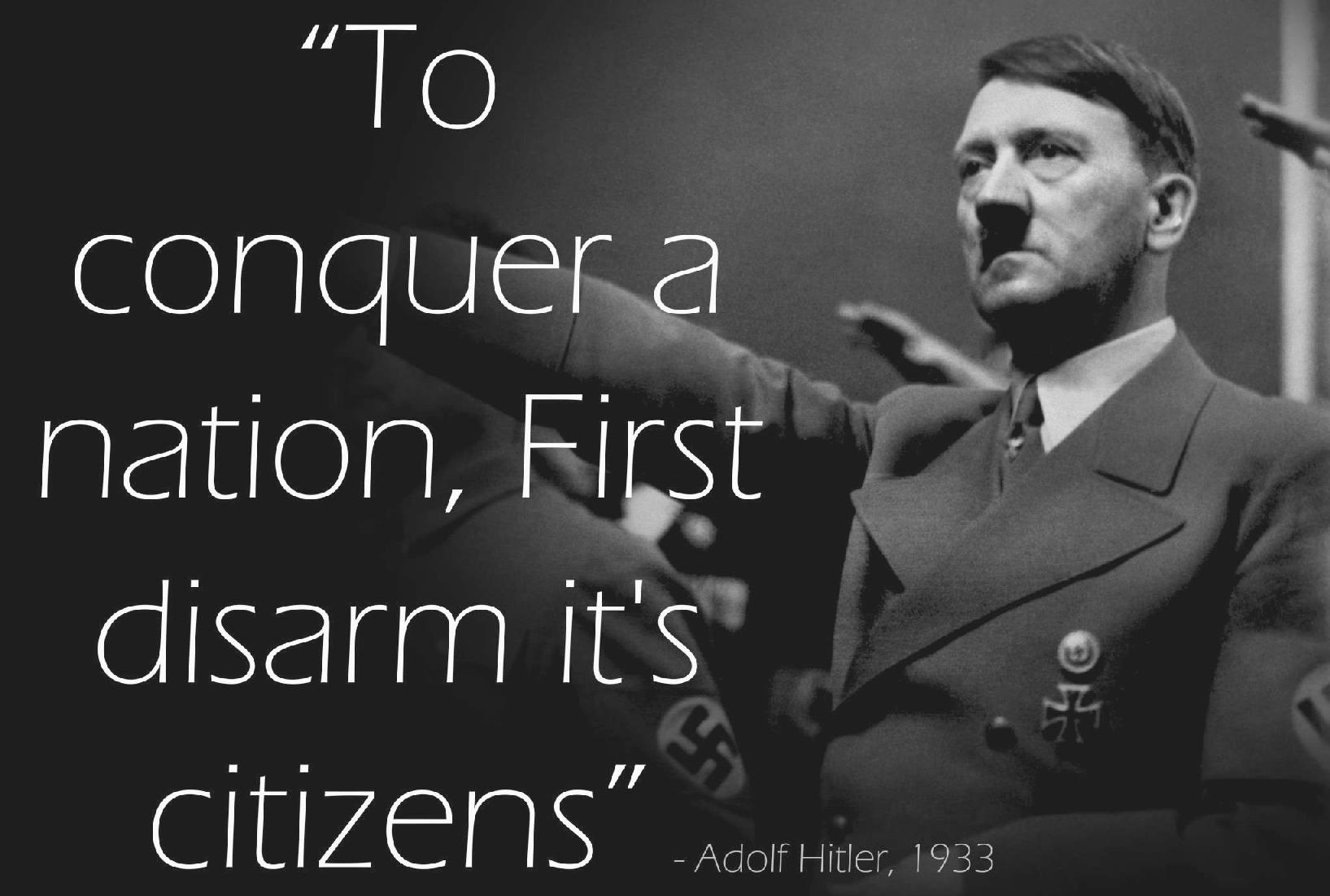
Struggle is the father of all things. It is not by the principles of humanity that man lives or is able to preserve himself above the animal world, but
solely by means of the most brutal struggle. If you do not fight, life will never be won. -
Adolf Hitler -
Take
a look at the Articles below and contrast it with the European Convention of
Human Rights, or the Universal Declaration of Human Rights, and you will
see the rot setting in. The UK bangs the equality drum, but in reality
is more like a Police State in the way it operates, according to cases
that we are following and cite as examples. Ultimately, the ruling
monarch is responsible for appointing a Government that provides an
effective administration. Clearly, that is not the case as of June 2020.
An Act to give further effect to rights and freedoms guaranteed under the European Convention on Human Rights; to make provision with respect to holders of certain judicial offices who become judges of the European Court of Human Rights; and for connected purposes.
[9th November 1998]
BE IT ENACTED by the
Queen's most Excellent
Majesty, by and with the advice and consent of the Lords Spiritual and Temporal, and Commons, in this present Parliament assembled, and by the authority of the same, as follows:-
S C H E D U L E S -
Schedule 1
THE ARTICLES
PART I
THE CONVENTION
ARTICLE 3
PROHIBITION OF TORTURE
No one shall be subjected to torture or to inhuman or degrading treatment or punishment.

A
black civil rights demonstrator being attacked by police dogs, May 3, 1963, Birmingham, Alabama.
Police brutality in the United States, the unwarranted or excessive and often illegal use of force against civilians by U.S. police officers. Forms of police brutality have ranged from assault and battery (e.g., beatings) to mayhem, torture, and murder. Some broader definitions of police brutality also encompass harassment (including false arrest), intimidation, and verbal abuse, among other forms of mistreatment.
This
is by no means limited to the US, with English police using excessive
force during arrests, followed by inhuman treatment during detention.
Water boarding
was used by British military intelligence in the questioning of
terrorist suspects in the 2000s.
Before the escalation of segregation of undesireables in Nazi Germany under
Adolf
Hitler, in 1943 officers of the Los Angeles Police Department were complicit in attacks on Mexican Americans by U.S. servicemen during the so-called Zoot Suit Riots, reflecting the department’s history of hostility toward Hispanics (Latinos).
Regular harassment of homosexuals and transgender persons by police in New York City culminated in 1969 in the Stonewall riots, which were triggered by a police raid on a gay bar; the protests marked the beginning of a new era of militancy in the international gay rights movement. And in the aftermath of the 2001 September 11 attacks, Muslim Americans began to voice complaints about police brutality, including harassment and racial profiling. Many local law-enforcement agencies launched covert operations of questionable legality designed to surveil and infiltrate mosques and other Muslim American organizations in an effort to uncover presumed terrorists, a practice that went unchecked for at least a decade.
The great majority of victims have been African American. In the estimation of most experts, a key factor explaining the predominance of African Americans among victims of police brutality is antiblack racism among members of mostly white police departments.
Whereas racism is thought to be a major cause of police brutality directed at African Americans and other ethnic groups, it is far from the only one. Other factors concern the unique institutional culture of urban police departments, which stresses group solidarity, loyalty, and a “show of force” approach to any perceived challenge to an officer’s authority. For rookie officers, acceptance, success, and promotion within the department depend upon adopting the attitudes, values, and practices of the group, which historically have been infused with
anti-black racism.
Following World War II. Most white communities, including white police departments, were unaccustomed to the presence of African Americans who migrated from the rural South, to the North and West, and reacted to their increasing numbers with fear and hostility, attitudes that were exacerbated by deeply ingrained racist stereotypes. Reflecting the beliefs of many whites, northern police departments acted upon the presumption that African Americans, and especially African American men, possessed an inherent tendency toward criminal behaviour, one that required constant surveillance of African Americans and restrictions on their movements (segregation) in the interests of white safety. Accordingly, by the mid-1950s many urban police departments had implicitly reconceived their missions as essentially that of policing African
Americans - i.e., protecting whites against blacks.
The forms of police brutality to which this situation gave rise were variable and generally not limited to physical assault (beatings) and excessive use of force. They also included unlawful arrests, verbal abuse (e.g., racial slurs) and threats, sexual assaults against African American women, and police homicides (murders of civilians). Police were also sometimes complicit in drug dealing, prostitution, burglaries, protection schemes, and gun-smuggling within African American neighbourhoods.
Most whites remained unaware of such brutality until about the mid-1960s,
mainly because city newspapers did not consider it newsworthy. In contrast, incidences of police brutality were regularly covered in the black press from the early 20th century, frequently in front-page articles. Likewise, local and national civil rights organizations collected thousands of affidavits and letters from African Americans documenting their direct experiences of police brutality.
But it was not until after WWII, that the Nations joined together to devise rules to curb torture and degrading treatment, after witnessing the death camps in Nazi
Germany, but still police in the US and UK are using excessive force.
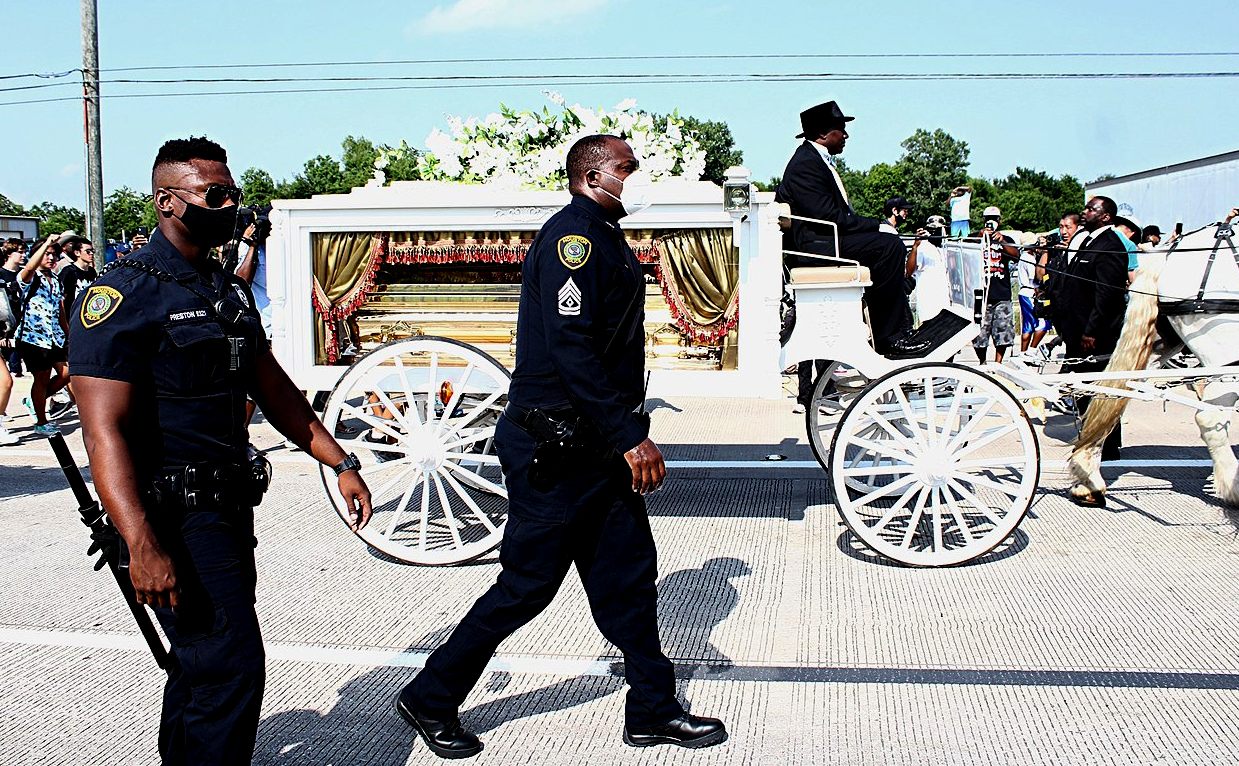
A federal judge temporarily blocked federal law enforcement officers from arresting or using physical force against journalists and legal observers in Portland, Oregon, amid ongoing protests against police brutality and flaring tensions over the deployment of agents in the
city - arising from the Floyd protests.
U.S. District Judge Michael Simon said Thursday there were indications the media had been targeted by federal law enforcement sent to Portland and moved to protect those documenting the rise in tensions.
“When wrongdoing is underway, officials have great incentive to blindfold the eyes of the Fourth Estate,” Simon said in his ruling. “The free press is the guardian of the public interest, and the judiciary is the guardian of the press.”
GEORGE FLOYD
On May 25, 2020, Floyd was arrested after allegedly passing a counterfeit $20 bill at a grocery store in the Powderhorn Park neighborhood of Minneapolis. He died after Derek Chauvin, a white police officer, pressed his knee to Floyd's neck for nearly eight minutes during the arrest. Floyd was handcuffed face down in the street, while two other officers further restrained Floyd and a fourth prevented onlookers from intervening. For the last three of those minutes Floyd was motionless and had no pulse, but officers made no attempt to revive him. Chauvin kept his knee on Floyd's neck as arriving emergency medical technicians attempted to treat him.
The official autopsy report classified Floyd's death as a homicide attributed to cardiopulmonary arrest caused by subdual and restraint. A second autopsy, commissioned by Floyd's family and performed by Michael Baden, without access to various tissue and fluid samples, found that the "evidence is consistent with mechanical asphyxia as the cause" of death, with neck compression restricting blood flow to the brain, and back compression restricting breathing. Some experts have theorized positional asphyxia.
After Floyd's death, protests were held globally against the use of excessive force by police officers against black suspects and lack of police accountability. Protests began in Minneapolis the day after his death and developed in over 400 cities throughout all 50 U.S. states and internationally.
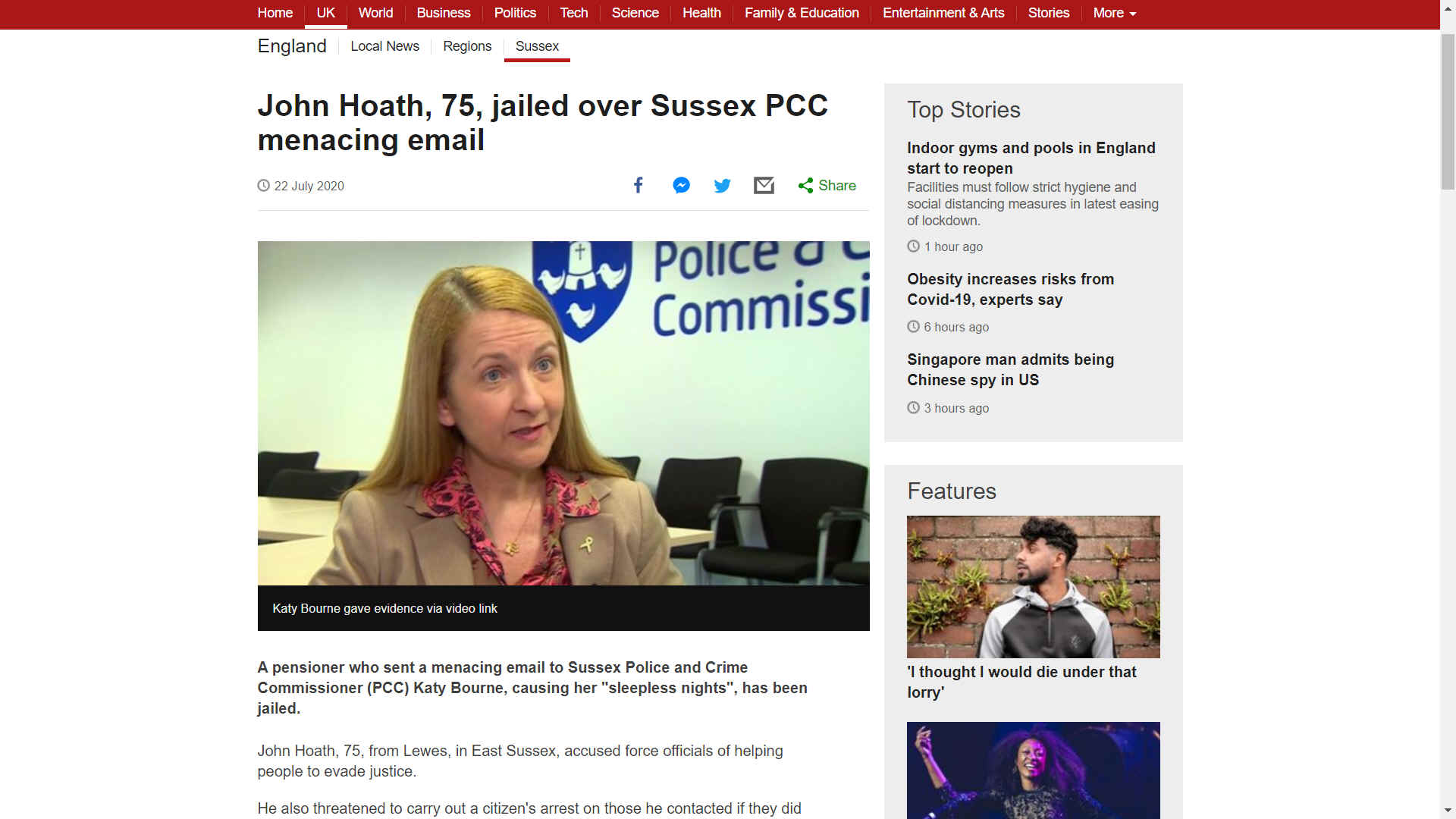
JOHN
HOATH
During
an arrest and transportation for breach of bail conditions relating to a
charge of harassment and stalking in the case of a solicitor, Gillian (Gilly)
Jones and crime commissioner, Katy
Bourne, it is alleged that an elderly man in his mid 70s was badly
treated by Sussex police, after he had found evidence of this force
acting illegally in the issue of a firearms certificate to a convicted
criminal.
Other
allegations by pensioner, Mr Hoath, included Sussex police being
involved in failures to investigate crimes in Wealden, many of which the
Injustice Alliance can confirm are true.
For
example, the murders of Sharna Grice and Susan Nicholson, both on whom
had complained to Sussex police that they were being threatened and both
were then threatened by Sussex police with prosecution, if they
persisted with their allegations. But, both women were subsequently
murdered by ?? and Robert Trigg.
Hence,
Mr Hoath may have a point that Sussex police are failing to investigate
crime. In our view they are also spending disproportionate amounts of
the taxpayers money trying to cover up their misdeeds.
Mr
Hoath was sentenced to 8 weeks in prison for his persistence in seeking
to press Sussex police to admit to their wrongdoing.
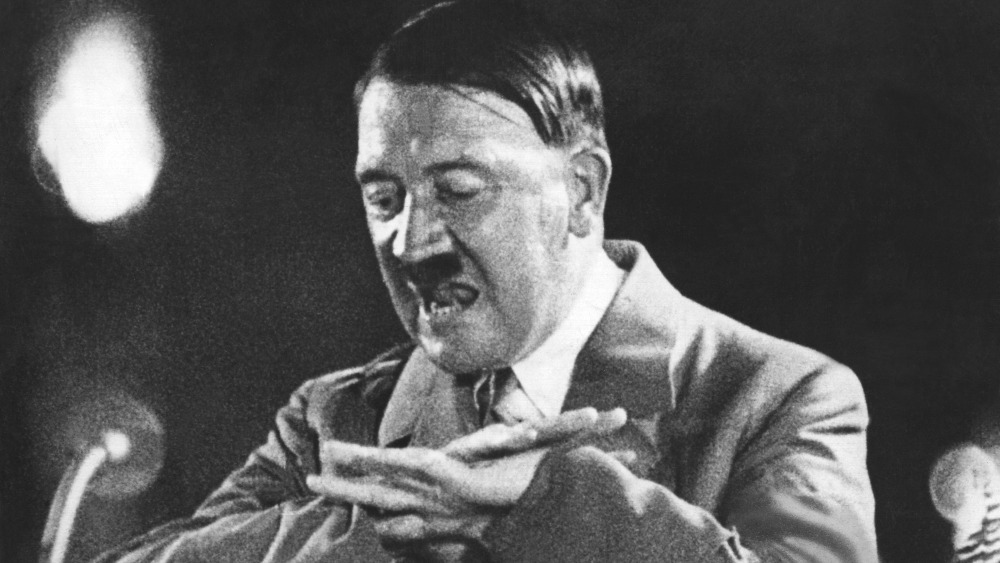
FREEDOM
OF THOUGHT AND SPEECH
- This website is protected by
Articles 9 and 10 of the European Convention of Human Rights and Fundamental
Freedoms. The Injustice Alliance avers that the right to impart information
is a right, no matter that the method of communication is unpalatable to the
State.
|
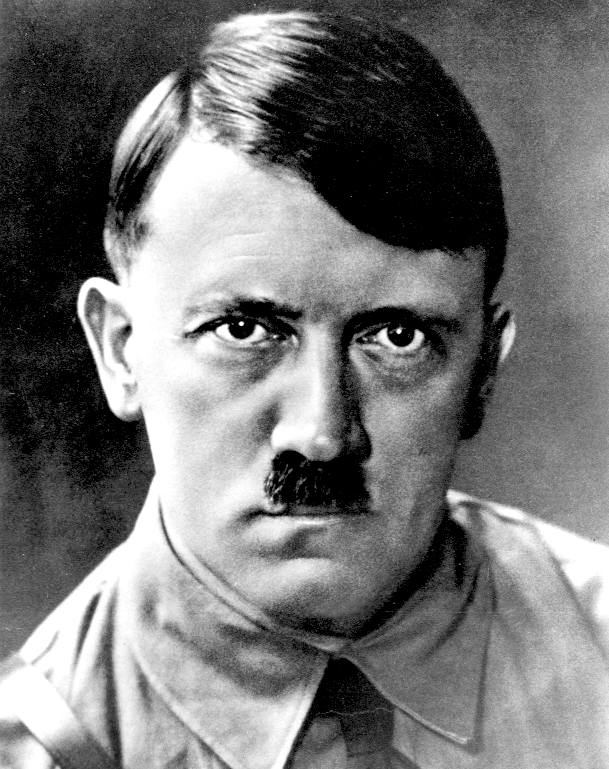
Adolf
Hitler
German
Chancellor
|
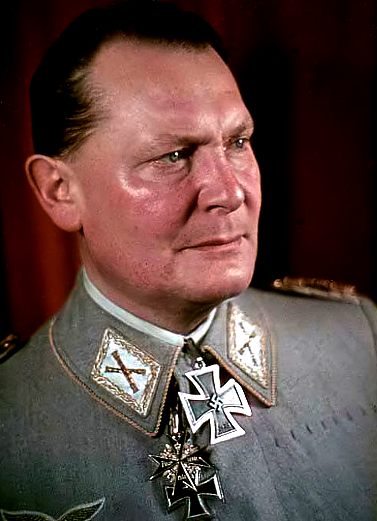
Herman
Goring
Reichsmarschall
Luftwaffe
|
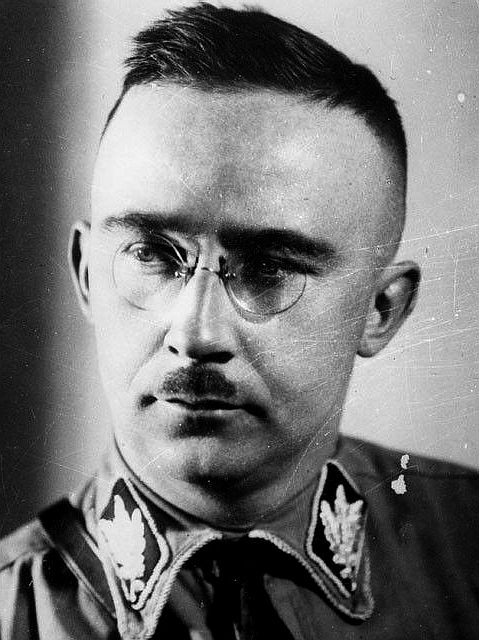
Heinrich
Himmler
Reichsführer
Schutzstaffel
|
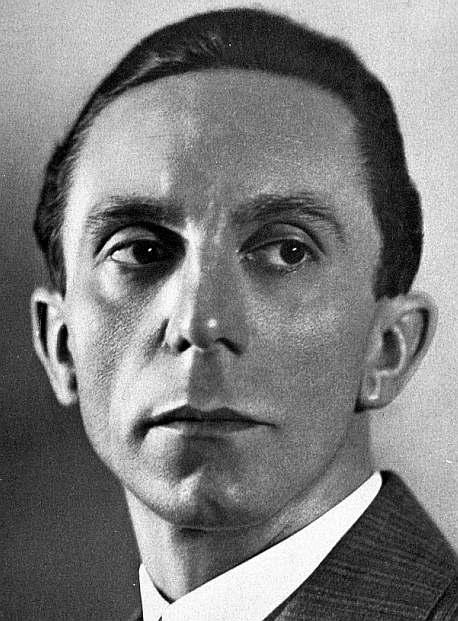
Joseph
Goebbels
Reich
Minister Propaganda
|
|
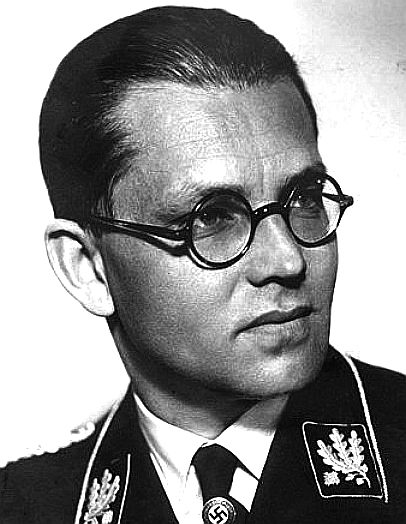
Philipp
Bouhler SS
NSDAP
Aktion T4
|
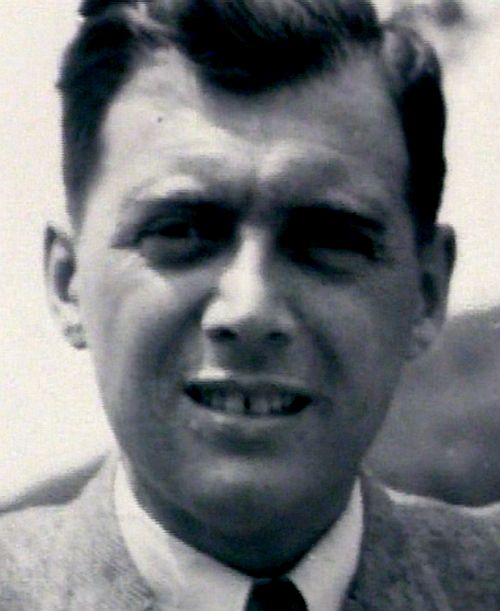
Dr
Josef Mengele
Physician
Auschwitz
|
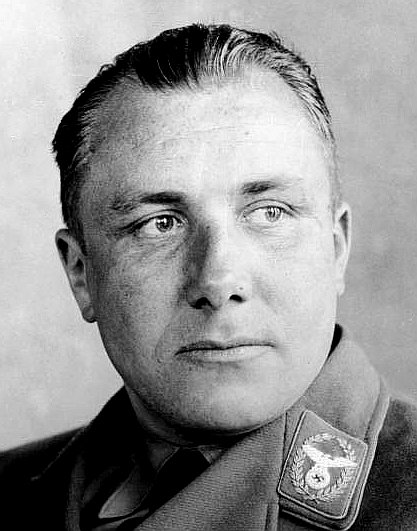
Martin
Borman
Schutzstaffel
|
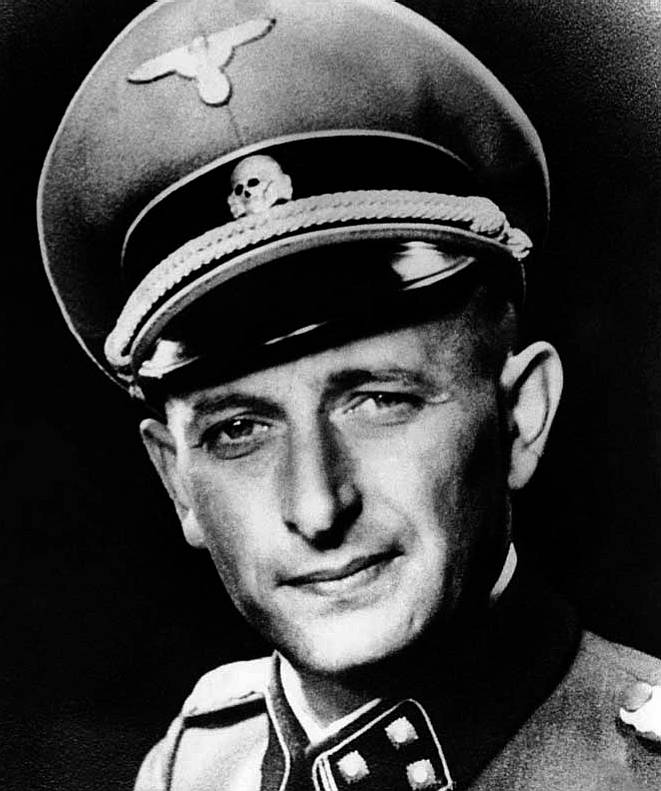
Adolph
Eichmann
Holocaust
Architect
|
|
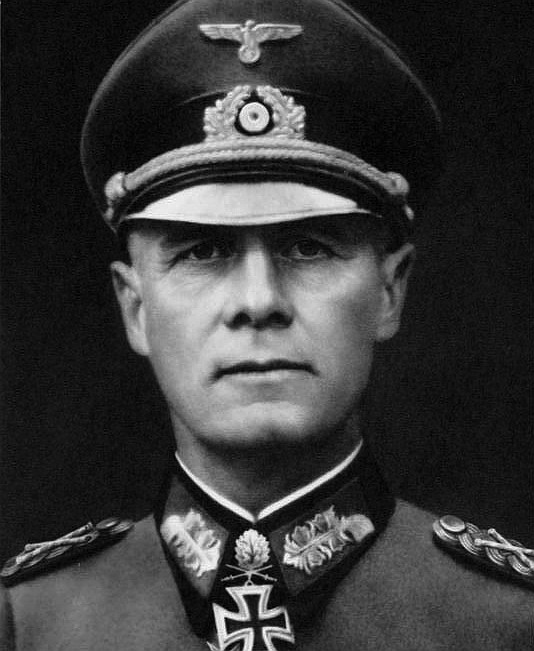
Erwin
Rommel
The
Desert Fox
|
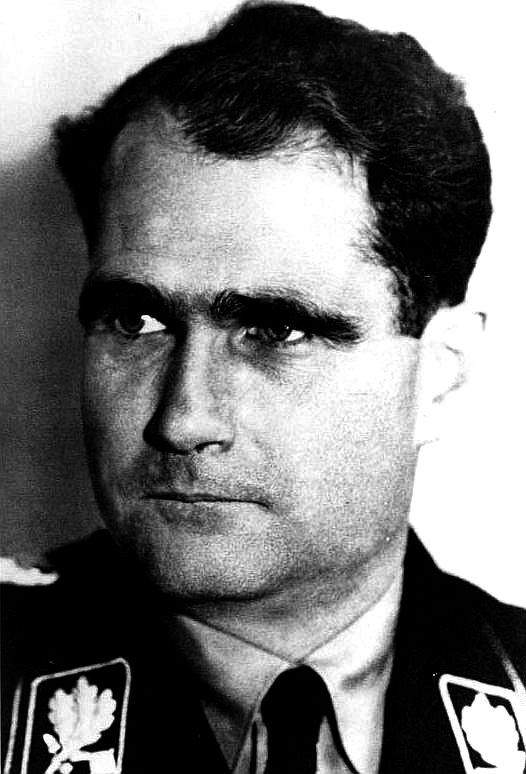
Rudolf
Hess
Auschwitz
Commandant
|
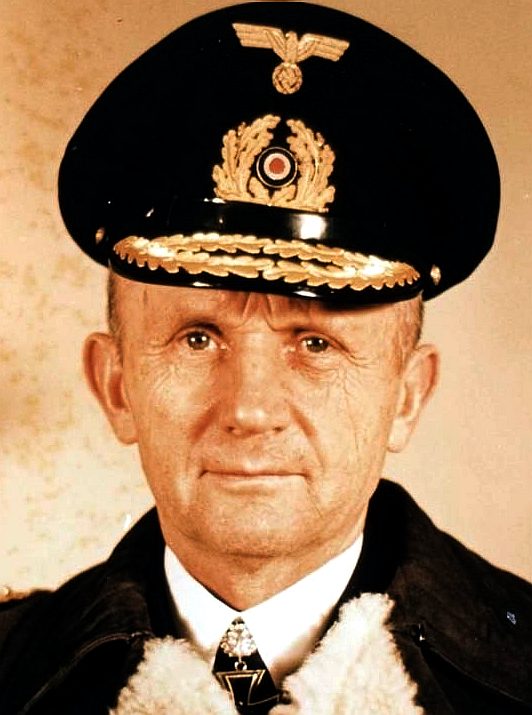
Karl
Donitz
Submarine
Commander
|
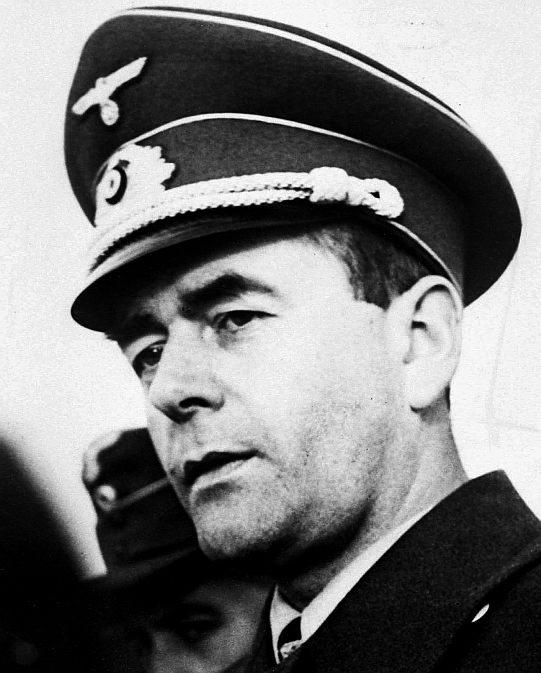
Albert
Speer
Nazi
Architect
|
Please use our
A-Z INDEX to
navigate this site
















